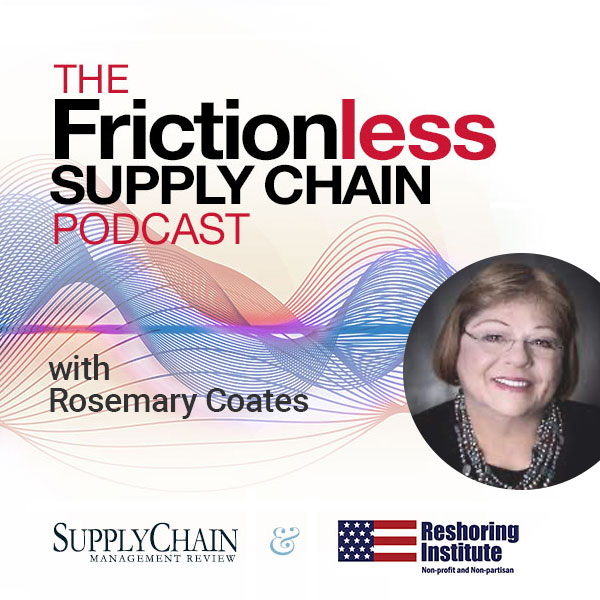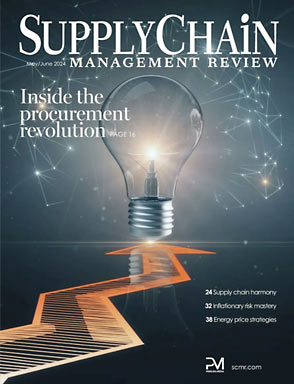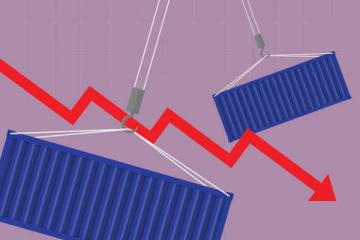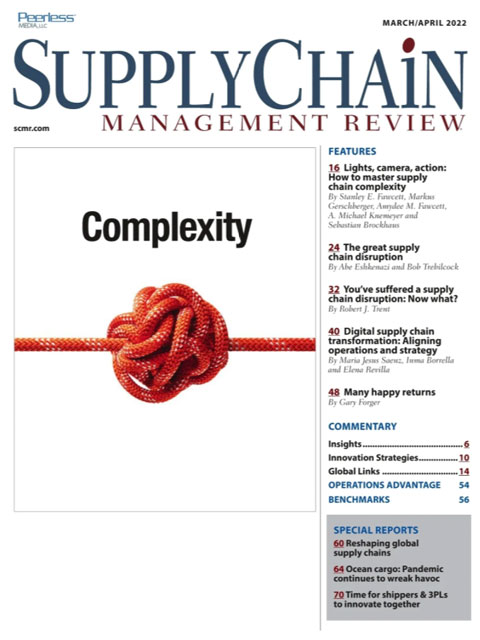Sorry, but your login has failed. Please recheck your login information and resubmit. If your subscription has expired, renew here.
March-April 2022
Yesterday, I hosted a webinar on the steps supply chain leaders are taking to redesign their supply chains to cope with this period of unprecedented demand. Earlier last month, I attended the Manifest conference in Las Vegas. The exhibitors featured a lineup of supply chain startups while the attendee list was dominated by venture capital firms looking to get in on the action in our booming industry. This morning, one of the lead news stories is about another disruption threatening to bring global supply chains to a halt: Browse this issue archive.Need Help? Contact customer service 847-559-7581 More options
While the increase in choice gives users more options, it also requires them to evaluate different systems to find the most appropriate one for their needs. We have created a classification framework that clarifies the differences between drone-based delivery systems in last-mile applications.
The framework also serves two other important purposes. First, it provides a unified classification system for academic and industry researchers and system developers. Second, the framework will help to align the work of these constituencies. As explained later, it is crucially important that industry and academic research is aligned as drone-based freight transportation evolves and the number of applications—ranging from package delivery to heavy-lift cargo movements—continues to grow.
As far as we know, this is the first classification framework that distinguishes drone-based logistics models according to their detailed design and operational configurations.
The basic framework
Private- and public-sector organizations are deploying drones in increasing numbers to deliver goods and services. In our research, the use cases fall into four broadly defined application areas: retailing and e-commerce, postal services and package delivery, food and beverage delivery and healthcare and emergency services.
Our systematic classification scheme is presented in two parts. First, we present a basic framework. Second, we propose extensions that refine this framework with information relating to the number of vehicles and depots, vehicle capacity and vehicle sharing possibilities.
The basic framework comprises four main categories of models as follows.
Pure-play drone-based (PD). In this model, drones deliver packages directly from logistics facilities such as distribution and fulfilment centers to customers. The PD model is limited by the flight range of drones and the number of depots in the network, and may not be able to serve all customers. Weight constraints represent another limitation; packages that are heavy and/or bulky may be beyond the capabilities of this model.
Unsynchronized multi-modal (UM). The UM model uses combinations of conventional transportation modes such as trucks (functioning as the supporting vehicle) and drones (functioning as the primary vehicle). These two types of vehicles operate independently so their movements are not synchronized. Because supporting vehicles expand the relatively limited range of primary vehicles, the UM option has fewer delivery limitations than its PD counterpart.

This complete article is available to subscribers only.
Log in now for full access or start your PLUS+ subscription for instant access.
SC
MR
Sorry, but your login has failed. Please recheck your login information and resubmit. If your subscription has expired, renew here.
March-April 2022
Yesterday, I hosted a webinar on the steps supply chain leaders are taking to redesign their supply chains to cope with this period of unprecedented demand. Earlier last month, I attended the Manifest conference in… Browse this issue archive. Access your online digital edition. Download a PDF file of the March-April 2022 issue.While the increase in choice gives users more options, it also requires them to evaluate different systems to find the most appropriate one for their needs. We have created a classification framework that clarifies the differences between drone-based delivery systems in last-mile applications.
The framework also serves two other important purposes. First, it provides a unified classification system for academic and industry researchers and system developers. Second, the framework will help to align the work of these constituencies. As explained later, it is crucially important that industry and academic research is aligned as drone-based freight transportation evolves and the number of applications—ranging from package delivery to heavy-lift cargo movements—continues to grow.
As far as we know, this is the first classification framework that distinguishes drone-based logistics models according to their detailed design and operational configurations.
The basic framework
Private- and public-sector organizations are deploying drones in increasing numbers to deliver goods and services. In our research, the use cases fall into four broadly defined application areas: retailing and e-commerce, postal services and package delivery, food and beverage delivery and healthcare and emergency services.
Our systematic classification scheme is presented in two parts. First, we present a basic framework. Second, we propose extensions that refine this framework with information relating to the number of vehicles and depots, vehicle capacity and vehicle sharing possibilities.
The basic framework comprises four main categories of models as follows.
Pure-play drone-based (PD). In this model, drones deliver packages directly from logistics facilities such as distribution and fulfilment centers to customers. The PD model is limited by the flight range of drones and the number of depots in the network, and may not be able to serve all customers. Weight constraints represent another limitation; packages that are heavy and/or bulky may be beyond the capabilities of this model.
Unsynchronized multi-modal (UM). The UM model uses combinations of conventional transportation modes such as trucks (functioning as the supporting vehicle) and drones (functioning as the primary vehicle). These two types of vehicles operate independently so their movements are not synchronized. Because supporting vehicles expand the relatively limited range of primary vehicles, the UM option has fewer delivery limitations than its PD counterpart.
SC
MR


Latest Supply Chain News
Latest Resources

 Explore
Explore
Software & Technology News
- Inflation continues to have a wide-ranging impact on supply chains
- Technology’s role in mending supply chain fragility after recent disruptions
- Tech investments bring revenue increases, survey finds
- Survey reveals strategies for addressing supply chain, logistics labor shortages
- AI, virtual reality is bringing experiential learning into the modern age
- Humanoid robots’ place in an intralogistics smart robot strategy
- More Software & Technology
Latest Software & Technology Resources

Subscribe

Supply Chain Management Review delivers the best industry content.

Editors’ Picks






